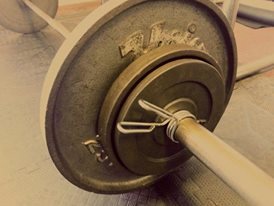I have been sitting staring at my computer screen for about 30 minutes trying to consider how to write about the next H&S topics and even I am struggling with how to put this down in a #Fun way…. Not least because my mind keeps drifting off to when is it okay to order a cocktail?! Well I am sitting working whilst on holiday. #Committed That’s what I am!
Then it dawned on me, only because a few of gym buffs keep walking past me, that they do a lot of heavy lifting and I could perhaps link this to lifting at work. I hear you, but they do that for fun not work… Ah, but what about the Personal Trainers who show them what to do! They are at work… A bit tenuous, and not really an employer/ employee relationship, I admit… but… what are the main rules covering lifting at work?
Well, potentially hazardous manual handling e.g. lifting heavy ‘weights’ or awkward objects such as a kettle bell (anyone who has tried to swing a heavy one of those will realise it is awkward) is treated in much the same way as other workplace hazards. Therefore, you need to assess the risks and take steps to eliminate them (stop going to the gym… okay so not realistic) or reduce them as far as reasonably practicable – I have been told it is all about the ‘form’. Of course I am using these as examples and you need to address the issues properly.
Further, your employees should also be given training, both in how to recognise potentially hazardous lifting and in good handling technique (we are back round to ‘form’ in other words how you carry out the exercise in the correct manner).
Continuing with the theme of the gym well, what about the equipment used from dumb bells to the rowing machine and that thing that vibrates (pick your minds out the gutter…) What are the main rules covering equipment?
All equipment used must be taken into account in your risk assessment. Some potential hazards to consider when assessing your equipment include: the risk of the machines cutting or catching people (okay so in a gym the risk is not as great as in sawmill but you get the picture): creating excessive noise – get your minds back out of that gutter; and throwing out material, dust or fumes.
Without going into too much detail some of the general requirements include ensuring that equipment is:
- suitable for the purposes for which you are using it;
- maintained in a safe condition and if necessary inspected;
- fitted with any necessary safety devices and safety warnings – usually those little red buttons or the cord you attach to yourself; and
- only used by adequately trained employees.
Remember that additional regulations apply to certain types of equipment that carry particularly high risks – for example, dangerous machinery, lifts and boilers – not usually found in a gym. These additional requirements include more stringent maintenance and inspection regimes, as well as a prohibition on the use of dangerous equipment by young people.
Something that would be hard to relate to the gym or health conscious topic, and unless you are thinking of the recent allegations in the papers regarding athletics and doping, we are talking substances but not that type! And there are lots of other unsuitable areas of which we could use but this is probably going way off topic… even for me!
But a lot of businesses work with dangerous substances even in the office environment with potentially hazardous substances such as printer toner and adhesives. With that in mind, what do you have to do if you work with dangerous substances?
Firstly you will find the requirements under the COSHH (Control of Substances Hazardous to Health) Regulations. But don’t switch off just yet just at the mention of a Regulation as it states that you must assess and control the risks from hazardous substances. Some of things you should do:
- Examine your workplace to identify any potentially hazardous substances: including those used or created in the course of your business activities. I don’t think sweat counts…
- Identify the specific risks posed by those substances. Check the safety data sheets supplied with the substances; ask the supplier for information or check online.
- Consider how they could harm your employees, customers or other members of the public affected by your business. Could they be breathed in, splashed into the eyes or skin or swallowed? Now there are a lot of thoughts running through my head about this, sweat particles and stuff and I am not sure whether to make a joke or gag a little…
- Consider how big the risk is of an incident occurring and how serious an incident could be.
- Implement suitable control measures. This could include improved storage facilities, staff training on the safe use of the substance, introducing personal protective equipment or clothing or replacing the substance with a less hazardous alternative. After the point above I think I might wear a facemask next time I go to the gym!
- Appoint someone to ensure the control measures are working and are complied with. Keep a record of your checks.
- Remember, if you have five or more employees your assessment must be written down.
So even in the office environment and with substances such as printer toner, etc. all these items must be appropriately used, labelled and stored. As for the gym analogy it was probably not the most ideal scenario but hopefully it made slightly more amusing that just putting down the dull stuff in black & white…
Until next time, stay safe, healthy and remember to #GetLawSavvy!




